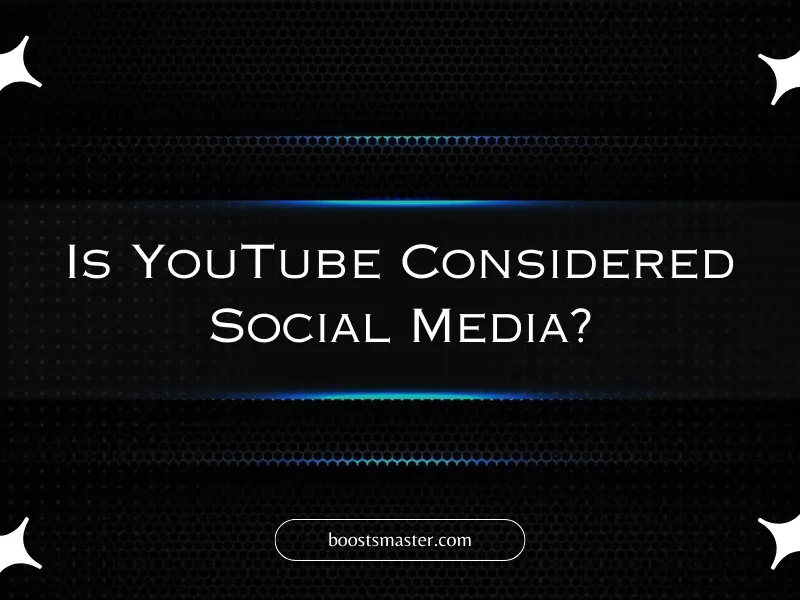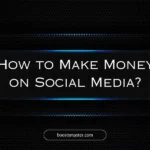Whenever I scroll through YouTube, a question always pops into my mind—is it really the same kind of platform as Facebook, Instagram, or Twitter? Many users come to YouTube just to consume content, but if you look closely, it actually lets people connect, share, and even build communities just like other social media apps. With over 2.7 billion active monthly users according to Exploding Topics, it’s clearly a behemoth in the digital world.
Some features like comments, likes, and community posts help foster interaction and engagement, and that’s what really puts it under the social media umbrella. As a creator myself, I’ve used it not only to grow subscribers, but also to test marketing ideas, offer tips and tricks, and even drive business revenue. Compared to other platforms, YouTube gives more ways to stand out and reach followers with smart content.
This article clears the air and answers the questions many still have about whether YouTube is truly considered part of social media. If you’re curious to learn what really distinguishes it from others, keep reading this page—and don’t forget to Subscribe to our Weekly email newsletter for insider insights from experts in the field and beyond.
How Do We Know It’s Social Media?
When I was doing homework on how platforms like YouTube, Facebook, and Twitter work, I noticed they all let users create, share, and engage with content. Just like Instagram, YouTube has profiles, comments, and interaction with peers—this makes it part of the social apps family.
- People and organizations use it to connect and build communities
- Videos and posts go viral, just like on Snapchat
- Students and individuals use it for studies, assignments, and even to explore new information
- Brands use professional management tools to schedule, track, and keep control over their online presence
- The features support personalization, communication, and engagement
- The system helps streamline your message and generate value
- YouTube acts like an engine to help you grow, with content that’s generated by people
I’ve seen how it brings communities together, making it a strong social media tool, not just a video site.
Need help managing your YouTube or social media presence? Check out our Social Media Management Services for expert support!
Four Reasons Why is YouTube Considered Social Media
Offer Interaction
YouTube is more than just a platform to watch videos. It offers various ways for users to interact with content. In the comment section, viewers can express their opinions, criticise, or applaud the creator’s work. The ability to comment and engage with videos makes it a dynamic social media platform. Whether you’re offering suggestions or just showing appreciation, this interaction turns YouTube into a social place for discussion. It’s not just about watching—it’s about being part of a community and contributing to the conversation.
Personal Accounts
One of the key features of YouTube is the ability for users to create their own personal accounts. This allows them to subscribe to their favourite channels, like videos, and share content. Each person can tailor their feed to their interests, which is a big part of YouTube’s personalisation. This makes it a social media app as it allows users to shape their own online experience. The customisation of content ensures that users receive videos that resonate with them, creating a more meaningful connection with the platform.
A Great Platform for Influencers
YouTube has become a major hub for influencers, who have the ability to create content that reaches millions of viewers. With the potential to carve out a career and gain stardom, influencers use YouTube to engage with their fans through live Q&A sessions, product reviews, and personal updates. The platform offers a unique opportunity for content creators to build a community and make their content go viral. Through likes, comments, and shares, YouTube makes it easier for influencers to connect with their fans and grow their brand.
Allow Users to Engage
One of YouTube’s strongest attributes is its ability to allow users to engage in a variety of ways. Whether it’s through liking, subscribing, or commenting, there are many ways for viewers to interact with the content they enjoy. The thumbs-up and thumbs-down buttons give users the chance to rate the videos they watch, allowing creators to see how their content is being received. This level of engagement not only benefits the creator but also helps the platform deliver more tailored content to the user, creating a more connected social media experience.
Which Type of Social Media Does YouTube Belong To?
YouTube is often seen as a video-sharing site, but when you dive deeper, it clearly fits into the broader social media platforms category. Just like Facebook, Twitter, and Instagram, YouTube allows users to share and promote content. However, YouTube specializes in video, which sets it apart from other social sites focused on text or images.
- YouTube is a video-sharing platform where users can upload, view, and comment on videos.
- Similar to Instagram and TikTok, users can connect with others through shared content and comments, making it a part of the social network.
- The platform encourages discussions and engagement through likes, comments, and shares, much like Facebook and Reddit.
- While YouTube allows for informative videos, it also provides space for fun, educational, and deeper topics, similar to what you might find on Quora or LinkedIn.
In essence, YouTube isn’t just about video-sharing; it’s an active social network where users can send and receive messages, engage in discussions, and promote their content.
Looking for the latest tips on social media management and trends? Don’t miss our guide on What is a Social Media Influencer?
Brief Comparison of YouTube and Social Media Platforms
YouTube Vs Facebook
When you think of YouTube and Facebook, they both allow you to share content, but their formats differ. YouTube is mainly for video, with content creators uploading user-generated videos for the world to see. Facebook, on the other hand, provides a more varied mix of posts, including images, videos, and text updates. The audiences on both platforms are massive, but while YouTube focuses on video content, Facebook offers a more customizable feed where you can engage with text and images alongside videos. The key difference lies in how you interact with the content: liking or commenting on videos on YouTube is common, but Facebook allows you to connect through comments, shares, and pages. Both platforms target a wide spectrum of users, but YouTube appeals more to those looking for entertainment and tutorials, while Facebook offers more diverse interactions.
YouTube Vs TikTok
TikTok is a platform that has become known for its fast, short videos, making it a younger generation’s favorite. When comparing YouTube to TikTok, the major difference is the video format. TikTok videos are typically much shorter than YouTube’s regular content. However, both platforms allow you to share user-generated content, and both have trending videos that help discover what’s popular. YouTube allows for a wider variety of content types, from long films to video lectures and everything in between, while TikTok is designed to capture attention quickly with short bursts of fun and engaging content. If you’re looking for in-depth or complex topics, YouTube is your best bet. If you’re after quick, trendy clips, TikTok excels at delivering that experience.
YouTube Vs Instagram
Both YouTube and Instagram are platforms driven by visual design, but the way people use them sets them apart. YouTube is primarily a video-sharing platform, while Instagram mixes photos, short videos, and stories. Many influencers on Instagram use posts and stories to create and share content, while YouTube lets content creators produce longer, more polished video content. Both platforms allow for user engagement, with likes, comments, and shares, but Instagram is better suited for influencers looking to collaborate with brands on promotions, whereas YouTube is ideal for those aiming to build an audience with educational or entertaining video content. The primary difference here is the content types and how you want to consume it—Instagram for quick visual interactions, YouTube for longer, more detailed videos.
YouTube Vs Twitter (X)
When comparing YouTube to Twitter (X), the differences become even clearer. Twitter is a text-based platform that allows for quick updates, while YouTube is focused on video-sharing. Twitter’s main strength is in its newsfeed, where you can follow accounts and discover short, real-time updates from users around the world. YouTube, in contrast, is best known for longer-form content, allowing creators to upload everything from tutorials to movies. While Twitter excels in quick text-based interactions, YouTube gives users a chance to dive into visual content with user-generated videos. Twitter is better suited for news, while YouTube is perfect for exploring a vast range of topics through videos.
Conclusion
YouTube stands out in the digital world due to its wide usage and the adaptability it offers to both creators and audiences. Unlike traditional social media apps, YouTube’s focus on long-form content sets it apart, but it has also embraced short-form videos, like YouTube Shorts, to stay current with trends. This blend of creativity, user-generated content, and community engagement makes it a key player in the digital space.
YouTube is more than just an app for watching videos; it’s a platform that allows people to connect, communicate, and even learn while sharing their own stories. It’s a space where creators can build their community and inspire others, making it clear that YouTube is not just for entertainment, but also a powerful tool for global connection. With its innovative features like live streaming and the ability to share videos, YouTube embraces its roots as a place for creativity and continues to evolve to meet the needs of the digital age.
FAQs
What makes YouTube a social media platform?
YouTube is firmly established as a social media platform. It allows users to create, share, and engage with video content. People can upload their user-generated content, such as how-to videos, recipes, or humorous videos, and share it with others. The platform also enables interaction through comments, likes, and sharing, which connects users in a social world. With followers and subscribers, it allows people to form virtual communities around their interests.
How does YouTube connect users?
YouTube helps people connect by allowing them to create videos that can be shared with new audiences. The recommendation algorithms make it easier for videos to go viral and reach more people. Creators can use the platform to network with influencers and content creators, building communities based on shared ideas and passions. This interaction leads to engagement through comments, shares, and conversations, making it an ideal platform for people to communicate and connect.
Can YouTube be used for networking?
Yes, YouTube is a great platform for networking. It brings people together by enabling content creators to share ideas and engage with audiences. Followers and subscribers can easily form communities, which often interact over shared content. Whether it’s someone who posts video tutorials or a YouTuber creating humorous videos, YouTube provides a unique space for people to network and interact.
Why is YouTube considered a behemoth in the social media world?
YouTube is often called a behemoth because of its popularity and long-standing presence in the social media space. It’s one of the most popular platforms for sharing videos, with billions of users around the world. Since its launch, YouTube has transformed the way people consume and share content, making it a major player in the social media platform landscape. As of 2021, a survey from Pew Research showed that a large percentage of the population uses YouTube regularly.
Is YouTube free to use for everyone?
Yes, YouTube is free to view and accessible to anyone with an internet connection. You can create an account, upload videos, and engage with content without paying. However, users can opt to pay for YouTube Premium, which removes ads, but the basic service is free. This accessibility is one of the main reasons why it is so popular, offering an easy way for anyone to share their video content with other users.




